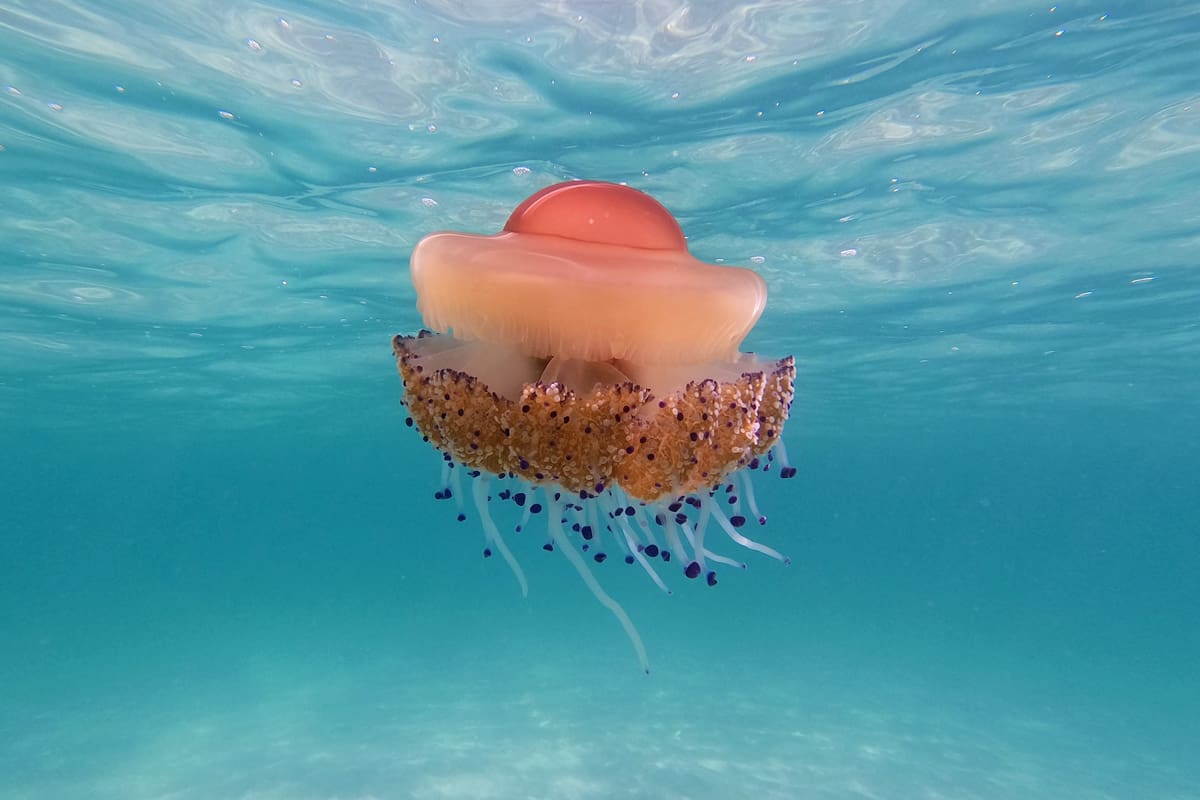Malta, with its crystal-clear waters and beautiful coastline, is a paradise for swimmers and beach enthusiasts. However, a potential obstacle to your aquatic adventures in these Mediterranean waters is the presence of jellyfish. While the sun’s scorching heat can be countered with sunscreen and a hat, encountering jellyfish requires a different set of precautions. Tourists and locals alike are encouraged to respect and admire these intriguing marine inhabitants from a safe distance while enjoying the breathtaking beauty of the Maltese seas.
Jellyfish Species in Maltese Waters
Jellyfish play a crucial role in the ecosystem of Malta, acting as both predators and prey. Their presence often increases during the warmer months, as the Mediterranean Sea experiences a rise in temperature. While some species of jellyfish in the region possess stinging cells that can cause discomfort to humans, most encounters are harmless and typically result in minor skin irritation.
Local marine enthusiasts and researchers are continually studying the different species of jellyfish found in Malta to better understand their behavior, life cycles, and ecological significance. The aim is to coexist with these remarkable creatures while safeguarding the delicate balance of the marine environment.
In this guide, we’ll equip you with the knowledge and tips to navigate safely around these intriguing yet potentially stinging creatures found in Maltese waters:
The Mauve Stinger
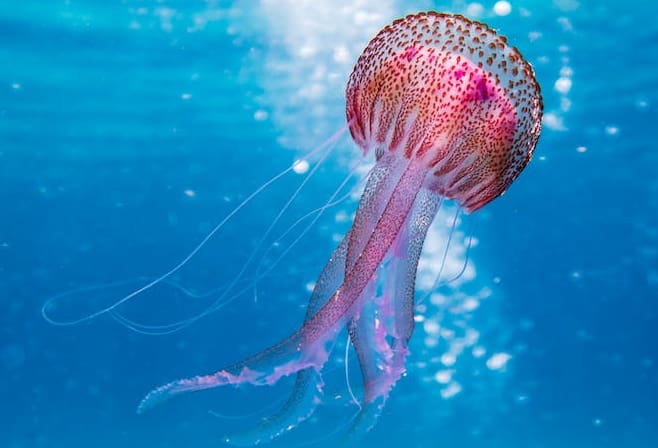
- Description: This jellyfish has a distinctive mauve coloration and is known for its strong, painful sting.
- Habitat: Mauve stingers are drawn to warm Mediterranean waters.
- Sting Impact: Some individuals may experience allergic reactions and slow-healing sting marks after encountering this species. Fortunately, they are relatively easy to spot.
Portuguese Man o’ War
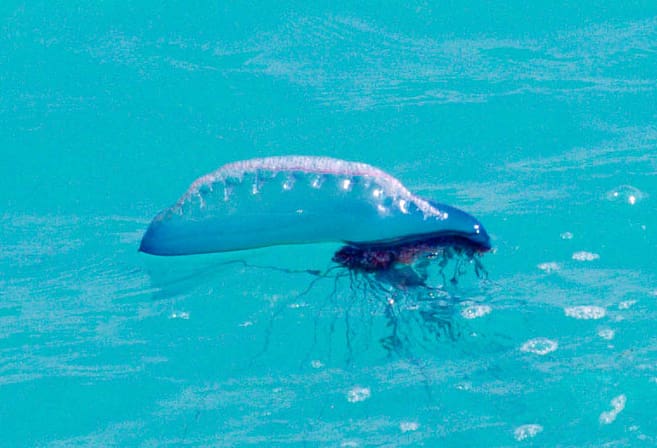
- Description: Technically, the Portuguese man o’ war is not a jellyfish but a siphonophore composed of cooperating organisms. It is often called a “big stinger.”
- Habitat: Found in warm waters, including the Mediterranean.
- Sting Impact: While it’s not fatal, the sting can be painful, and it may continue to sting even after the organism dies. Beware of washed-up Portuguese man o’ wars on beaches.
Moon Jellyfish
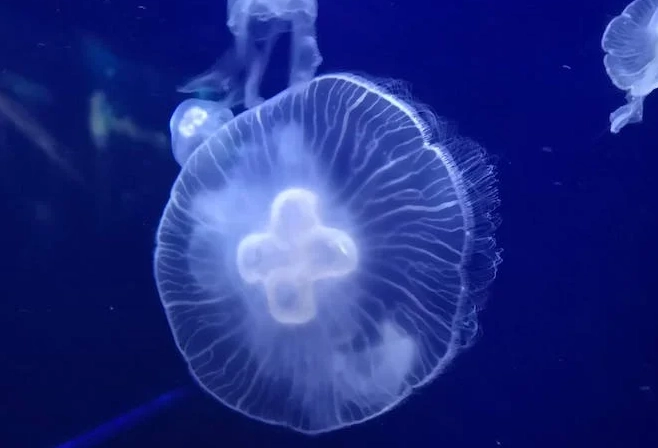
- Description: These jellyfish are easily recognizable due to their distinct blue color and intricate patterns.
- Habitat: Moon jellyfish are commonly found in the Mediterranean.
- Sting Impact: Moon jellyfish have a less potent venom than their counterparts, resulting in a milder sting.
Fried Egg or Egg-Yolk Jellyfish
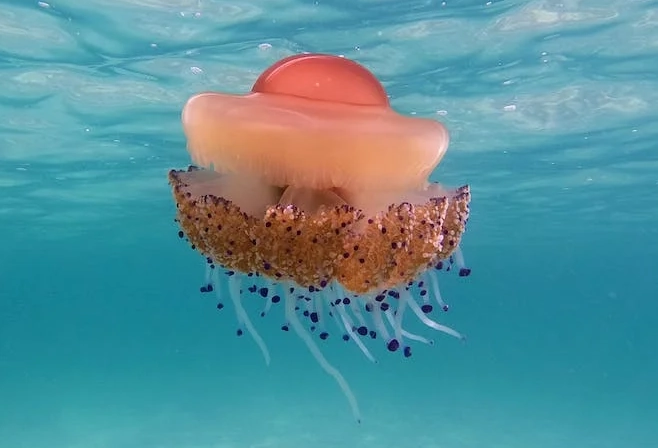
- Description: This jellyfish variety is characterized by its yellow color and a smooth, translucent bell with a unique central pattern, resembling an egg yolk.
- Habitat: You can often spot these jellyfish from late summer through autumn in Malta.
- Sting Impact: Good news – these jellyfish do not sting at all. You can touch them without fear.
Interesting Facts About Jellyfish in Malta
Before we dive into how to avoid and treat jellyfish stings, let’s explore some intriguing facts about these enigmatic creatures:
Jellyfish Don’t Swim: Surprisingly, jellyfish can’t swim in the traditional sense. They rely on pulsating movements to control their direction. If you get stung, it’s likely because you swam towards them, not the other way around.
They Move in Groups: When you spot one jellyfish, chances are it won’t be alone. Jellyfish often travel in groups, carried by the same ocean currents, usually dictated by the wind’s direction.
Jellyfish Numbers Are Increasing: Unfortunately, these stinging creatures aren’t going away any time soon. Warmer ocean temperatures and a decrease in their primary predator, sea turtles, contribute to their population growth.
Not All Jellyfish Sting: Out of around 200 known jellyfish species, only a small percentage possess stinging tentacles. The severity of the sting varies, but most jellyfish are harmless.
The Deadliest Jellyfish: While not found in the Mediterranean, it’s worth noting that the Australian Box Jellyfish is the most dangerous jellyfish globally. Its tentacles can reach up to 10 feet in length, making it a formidable threat.
What to Do If You Get Stung: Despite your best efforts to avoid them, there’s still a chance you might encounter a jellyfish and get stung. Here’s what to do in such a situation:
- Immediately rinse the affected area with saltwater for five to ten minutes. Avoid using fresh or hot water, as it can exacerbate the sting. Ice should also be avoided.
- Gently scrape the edge of your skin with a hard, flat object, such as a credit card. This helps remove any tentacle fragments that may be stuck.
- Applying vinegar or alcohol to the sting area can help prevent the release of toxins and alleviate pain.
- If you experience an unexpected allergic reaction, seek medical attention promptly. In some cases, antibiotics may be necessary.
- If you are stung on the face, experience significant swelling, or have difficulty breathing, do not hesitate to seek immediate medical assistance.
How Do Jellyfish Affect Your Experience in Malta?
Swimming in Malta’s stunning waters is an unparalleled experience, but being prepared to encounter jellyfish is essential for your safety and enjoyment. By familiarizing yourself with the common jellyfish species, their behaviors, and proper first-aid measures, you can confidently explore the Mediterranean’s aquatic wonders while minimizing the risks associated with these captivating, albeit stinging, creatures. So, don your swimwear, embrace the warm Mediterranean embrace, and swim with confidence in Malta’s pristine waters.

